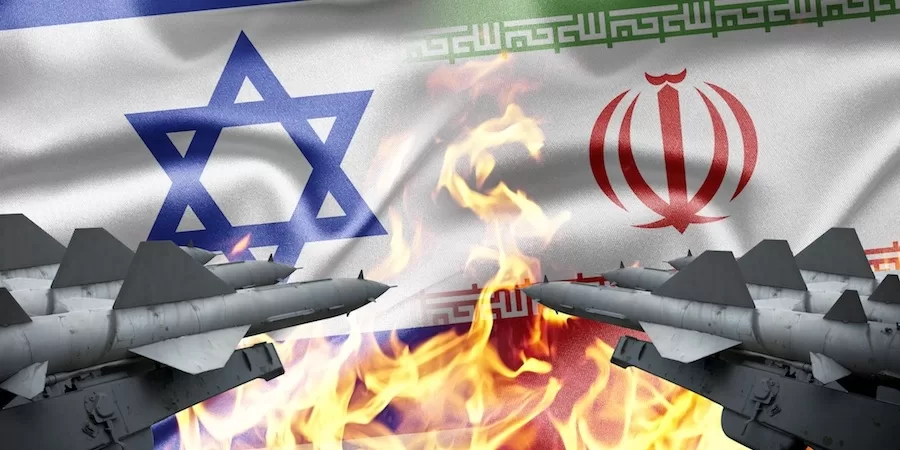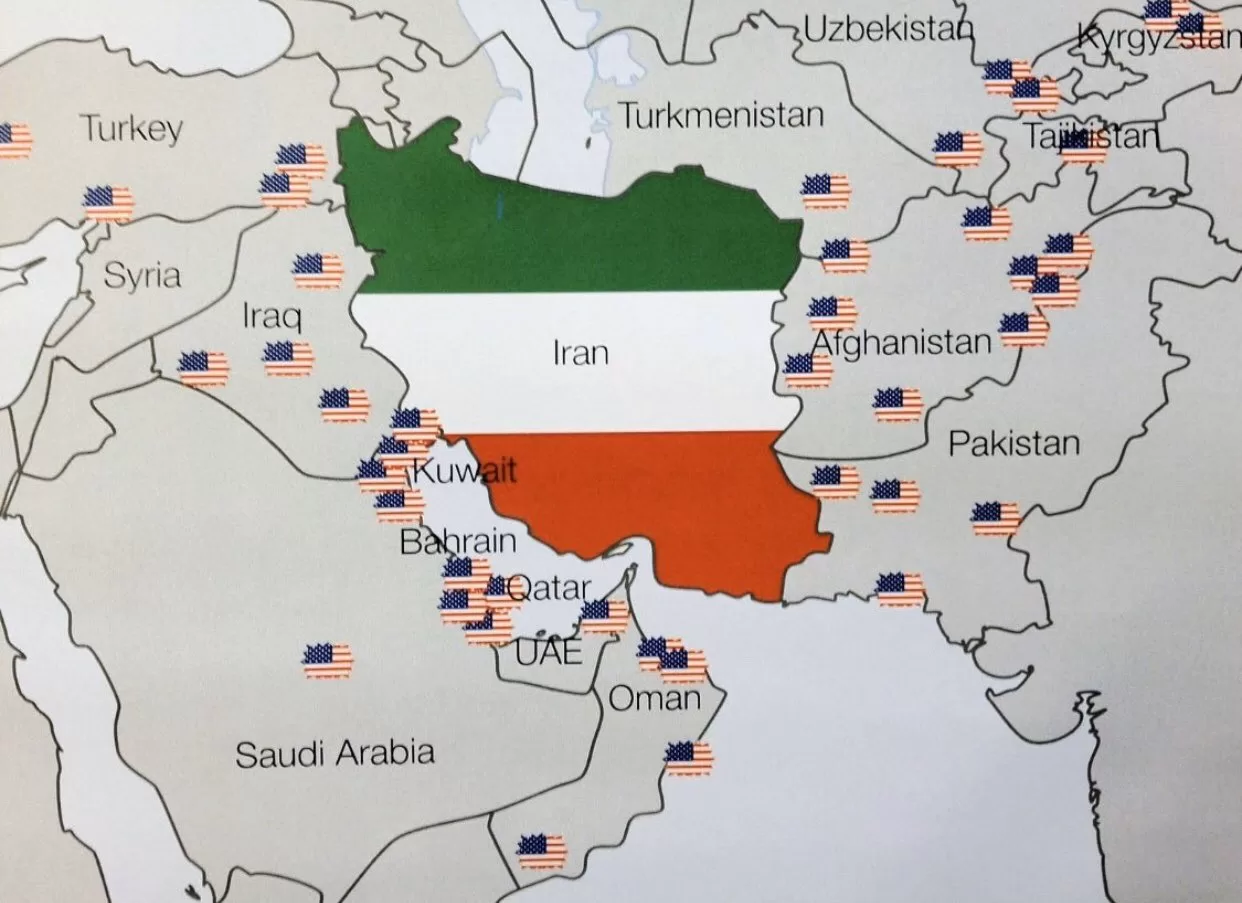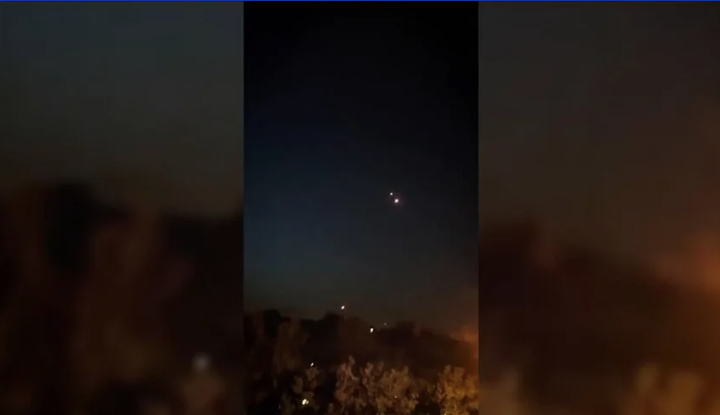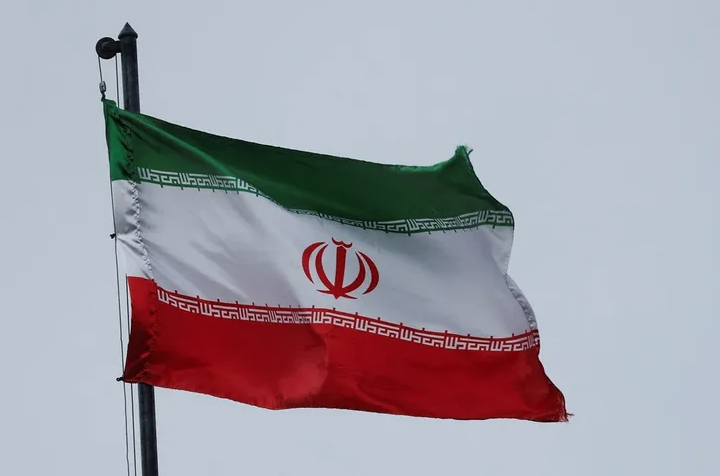Due to its geopolitical position, Iran has attracted the attention of extra-regional powers in every period of history. For example, Britain and the Russian Tsardom, which started their rivalry over Iran at the beginning of the 19th century, continued until the mid-twentieth century. The discovery of rich oil deposits further deepened the rivalry in the later period. The Second World War marked the end of Britain’s global power and resulted in the US replacing it as a regional actor.
US-Iranian relations developed as a strategic necessity during the Second World War. The necessity to provide logistical support to the Soviet Union fighting against Nazi Germany through Iran and to secure the oil regions resulted in the invasion of this country. Following the agreement, the south of Iran was occupied by the UK-USA and the north by the USSR army. The occupation lasted until the end of the war.
The occupiers did not behave similarly at the end of the war. While the UK and the US left the occupied Iranian territory in 1945, the USSR continued the occupation for some time. When the Soviet Union finally left Iran in 1946, it left behind two “states” based on ethnic identities. The “Kurdish Republic of Mehabad” around Urumiyeh and the “Republic of South Azerbaijan” in North West Iran. Both political entities were dismantled in 1947, following the strengthening of the Iranian central government.
This political development was instructive for the countries of the region and Iran in two respects. First, it became clear that the most important fault line threatening Iran’s political unity was its ethnic structure. Especially the Azeris and Kurds were potential and potential secessionist groups. The second instructive aspect was that the Iranian central government, when strengthened, was capable of eliminating political formations that threatened the integrity of the country. This experience was to be taken into account in the policies to be implemented against Iran in the years to come.
In the post-World War II period, two factors were decisive in US-Iranian relations. First, Iranian geopolitics took on a new meaning with the Soviet Union. Iran had an important position in the encirclement of the USSR from the south. The second reason for the US interest in Iran was the country’s rich oil and natural gas deposits. Oil was a strategic input for the Western economy and a sine qua non for military power. For these reasons, Iran remained the center of US attention in the post-war period.
Indeed, this close interest manifested itself in interference in Iran’s domestic politics. Mossadegh, who became Prime Minister in 1952, attempted to nationalize Iranian oil. However, he was soon ousted by an uprising and the exiled Shah Pahlavi returned to his country. Years later it was revealed that oil companies and US intelligence agencies were behind this plan.
The Shah of Iran remained the most important ally of the United States in the region until 1979, when the Islamic Revolution took place. The Shah not only fully supported US policies in the Middle East, but also remained in the limelight with his large sums of dollars from the sale of oil, the price of which soared after the 1973 Arab-Israeli war. The Shah remained a favorite ally during a period when the US allowed the US to spy on the USSR and use its territory to protect US interests in the Persian Gulf. The US administrations provided the loyal ally with all the modern military equipment and weapons it wanted, with the exception of nuclear weapons. The US also allowed Iran to occupy the strategically important islands of Abu Musa and Tomb at the entrance to the Persian Gulf. Under the Shah’s leadership, Iran became a regional power thanks to the United States, but had to face an unforeseen, rapid and deadly change in its internal balance.
The rapidly changing political, economic and social structure in Iran showed its effects throughout the 1970s. The masses, dissatisfied with the rule of the Shah of Iran and the developments, rose up under the leadership of the mullahs and merchants and took over the government, while the Shah found the solution of fleeing the country. In the days following the Islamic revolution, Khomeini, the religious and political leader of the new era, declared the United States as the enemy of the revolution, and Israel was to share in this enmity.
After the Islamic Revolution in Iran, the US lost its closest ally in the region. The loss of an ally was made all the more dramatic by the fact that the USSR had recently invaded Afghanistan. The Islamic Revolution in Iran put the US in a difficult position on two counts. On the one hand, the US lost its most important intelligence assets against the Soviets, and on the other, its oil resources in the Persian Gulf were at risk. On the other hand, Iran’s “export of revolution” policies triggered instability in the Persian Gulf. In the midst of such negative developments, Iraq, encouraged by the United States and not wanting to miss the opportunities that arose, attacked Iran in September 1980. Iraq’s aim was to reclaim the territory it had been forced to cede to Iran in 1974. The attack was seen by the western countries as an opportunity to restrain the revolution, to sell arms and to establish regional balances.
The Iran-Iraq War lasted eight years and battered both sides. The war provided the United States with new allies, such as Kuwait, to protect its interests in the Persian Gulf and increase its military power in the region. It also balanced Iran with Iraq. On the other hand, the economic, social and military devastation of the war gradually dampened the enthusiasm for the revolution. Moreover, in this process, the US became more permanent militarily by establishing an “Emergency Response Force” in the region within the framework of the Carter Doctrine. Thus, it tried to ensure energy security.
In the aftermath of the Iran-Iraq War, two important developments took place that would fundamentally change the regional balance. The first was the invasion of Kuwait by Iraqi leader Saddam Hussein, which continues to this day in Iraq. The other was the dissolution of the USSR, which fundamentally changed the international system and ended the Cold War. After the invasion of Kuwait, the US-led coalition force not only forcibly removed Saddam’s armies from the country, but also started a new process regarding the future of Iraq. Although this process was initially seen as a positive development for Iran, it created different problems and concerns in the following years.
Indeed, after the invasion of Iraq by US troops in March 2003, Saddam Hussein was removed from power and Iran became a neighbor of the United States. The invasion and regime change presented Iran with new opportunities and new risks.
After the collapse of the USSR, the Islamic Republic of Iran faced new opportunities and risks not only in the Middle East but also in Central Asia and the Caucasus. In order to seize the opportunities and minimize the risks, Iran tried to penetrate new regions by using religion as a functional ideology. For example, Azerbaijan’s declaration of independence raised serious concerns in Iran. Rising Azeri nationalism began to frighten Iran. In this context, Iran developed good relations with Russia and Armenia, while engaging in rivalry with Turkey and its supporter the United States in the Caucasus and Central Asia.
After the collapse of the USSR, the rich oil and natural gas deposits of the Caspian Basin brought the region to the center of international competition. The new states that emerged began to seek ways to transport these riches to Western markets via routes that excluded Iran. US administrations supported and encouraged this quest. The choice of routes that excluded Iran led to confrontations with the US from time to time.
The Islamic Republic of Iran’s support for radical Islamist groups, its attempts to sabotage the Middle East peace talks, its strategic cooperation with Syria since 1980, and the religious regime’s agenda of “Israel-Jewish” hostility as the “other” were other reasons for its confrontation with the United States. In this context, the United States began to impose sanctions aimed at containing Iran along with Iraq. In this context, the “Double Containment Policy” was enacted by the US Senate in 1996.
As US-Iranian relations remained tense and hostile at times, the terrorist attacks on the United States took place on September 11, 2001. The US administration’s reorientation of its policies in response to the September 11 terrorist attacks made the Iranian leadership uneasy. The main reason for this uneasiness was that the US saw the use of force as the first option in the new era. Although Iran was relieved when the US toppled the Taliban regime in Afghanistan, it was clear that it would create new problems in the long run. In the meantime, the US started to make military agreements with the Central Asian and Caucasus states one after another, which began to worry Iran.
Iran was being encircled by the US from the east and north. In the period following the invasion of Afghanistan, the US administration began to discuss another military operation aimed at regime change in Iraq. The realization of this project also meant the encirclement of Iran from the west.
Again, the Shiites, who had gained power in Iraq with the invasion, were closer to Iran than to the US, which had opened the way to power for them. Although this meant positive developments for Iran, being surrounded by the US on all four sides was a worrying situation.
The invasion of Iraq upset all the balances in the region, and the increased attacks and internal instability after the war posed serious problems for the occupiers. Soon the US administration began to blame Iran for the instability and internal conflicts in Iraq. Accordingly, Iran was interfering in Iraq’s internal affairs through the Shia in Iraq. The accusations took on a different character when they were coupled with the Iranian leadership’s nuclear weapons and missile projects, which were initially carried out in secret but later revealed. Instead of solving problems in the region, the war created new ones.

US-Israeli Politics
The Iranian Revolution took place not only against the Shah, but also against his greatest supporter, the United States. The anti-US identity of the revolution stemmed from the CIA-backed coup d’état in 1953 against Prime Minister Mossadegh, who was trying to establish a national economy in Iran, and the secret activities of the US to strengthen the Shah (Kurt, 2004: 66). Therefore, a growing reaction against the US emerged in Iran after the revolution. The reaction increased further on 4 November 1979 when a group of young Iranians occupied the US Embassy in Tehran. The main target of the hostage-takers was Mohammad Pahlavi and the Americans who had befriended him. This was due to the concern that Pahlavi could regain power in Iran with American support.
In addition to the rescue of the hostages, the US was also concerned that the reaction against the US in Iran would spread to the Arab world and damage its interests there (Yergin, 1999: 804). Indeed, the 1979 Islamic Revolution in Iran gave rise to many new revolutionary hopes in the Islamic world, particularly in Malaysia, Afghanistan and Algeria. While in other Muslim countries Islamic groups, which desired an Islamic state and government, were either in opposition, under the surveillance of the state or in secret organisations, they came to power with popular support only in Iran (Arslan, 2004: 18). This development caused the Islamic Revolution, which had previously been perceived as a utopia for Islamic extremists, to be seen as an achievable goal.
The United States also played a role in this development of events. For example, the US supported the Shah of Iran because it saw him as the anti-communist policeman of the Persian Gulf. However, it did not remain silent on the Shah’s failure to fulfil the religious, social and political demands and expectations of significant sections of the population.
Similar situations occurred in Afghanistan, Pakistan, Saudi Arabia and Egypt. In these countries where the living conditions of the people were very bad, the US was openly co-operating with despotic rulers. For this reason, every step taken by the USA after 11 September within the scope of the Greater Middle East Project causes the reactions that should be directed towards the authoritarian rulers of these countries to be directed towards the USA. While the US attempt to bring “moderate Islamist” democracy to the region was partially welcomed at the beginning, the serious political mistakes made by the US administration (insulting the Koran, the attempt to silence Al-Jazeera TV, the Abu Ghraib torture, etc.) became the main reason that increased the anti-Americanism of the people of the region after a while.
Iran’s reaction to the US increased after the US invasion of Afghanistan and Iraq within the framework of the Greater Middle East Policy. The Iranian administration perceived this US initiative as an attempt to encircle Iran, cut its contact with the Central Asian states and isolate it (Shakoor, 1995: 17-18). After the invasion of Afghanistan and Iraq, Iran started to think that it would be its turn to be attacked due to its political and religious power in the region. The US was signalling military intervention against Iran. In addition to the arms embargo that the US had previously imposed in order to regain control of Iran, in 1996 it had also passed a law imposing various sanctions against those who co-operated with Iran. This law led Japan, for example, to cancel a three-billion-dollar investment project in Iran’s oil reserves in the Azadegan region, although some countries, such as Japan, did not hesitate to enter into oil and gas agreements with Iran. The US also tried to dissuade Russia from a civilian nuclear reactor project in Iran. Defining Iran as the third pillar of the “axis of evil” along with Iraq and North Korea, the US did not rule out the option of military intervention.
The reasons for the US to portray Iran as part of the “axis of evil” can be summarised as follows:
A. Iran, which became one of the most important oil producers in the world with the revolution, has been out of the control of the USA. However, the US has not been able to compensate for this blow to its energy policy, nor has it been able to prevent Iran, which is vital for the control of Asia, from cooperating with countries that rival the US.
B. Iran, which is in an important position in terms of transporting the energy resources in the Caspian, Caucasus and Central Asian Republics to the world markets together with the energy resources in Iran, is concerned that the US may close these resources to its own use.
C. Iran wields considerable political influence over its Shi’ite population, despite the differences and rivalries that exist between its own Shi’ite population and the Shi’ite groups in Arabia, the Caucasus and Asia.
D. Iran, de facto sandwiched between US occupied Iraq and Afghanistan, has turned to nuclear weapons production as a way to escape the fear of being next in line. Although Iran has declared that this action is purely for defence and peaceful purposes, it has not hesitated to express that it could “turn the world into hell” (Sabah, 2005). In July 2004, Iran announced that it had started the production of centrifuge parts that process uranium into nuclear material and drew the attention of the US and Israel with its announcement on this issue. Bush stated that they would never tolerate Iran developing nuclear weapons, while Israel declared that they would strike Iran’s nuclear power plants. Today, the EU-brokered talks on Iran’s nuclear energy production have not yet reached a conclusion due to the deep mistrust between the US and Iran, which means that the American threat to Iran continues.

Could the US also strike Iran?
In the months following the attacks of 11 September 2001, the United States accelerated its efforts to target Iran for supporting terrorism. The first goal was to bring about a regime change in Iran with the support of the people without the need for a military attack. For this purpose, the CDI (Coalition for Democracy in Iran) organisation was established in 2002 under the leadership of Michael Ledeen (Yıldızoğlu, 2004: 46). In addition, US agents were allowed to infiltrate Iran (Hurriyet, 2005). This organisation gradually increased its effectiveness after the US invasion of Afghanistan and Iraq. With the help of this organisation, US special operation units entered Iran through Afghanistan and tried to identify nuclear and chemical production facilities (Bilbilik, 2005: 10). As a result of these efforts, anti-American demonstrations were organised on the streets of Iran from time to time. However, as the justifications put forward by the US for the invasion of Iraq proved to be unfounded and the news spread that the US was leading the changes of power in Georgia, Ukraine and Kyrgyzstan, the public started to support the conservative regime more and more in Iranian domestic politics. This development has shown that it is not possible to bring about a change of power in Iran by supporting local activities. The election of the conservative candidate Ahmadinejad in the presidential elections held in June, contrary to pre-election expectations, is partly explained by the increasing American pressure on Iran (Aras, 2005: 58).
The words of John Bolton, the US Deputy Secretary of State in charge of nuclear non-proliferation, “We are determined not to allow Iran to acquire a nuclear weapons capability”, and the news that Israel has finalised plans to strike Iran’s nuclear facilities in pursuit of an atomic bomb, show that the US-Israeli alliance has not ruled out military intervention in Iran. However, Bush and his team know that Iran is stronger than Afghanistan and Iraq, where the US has intervened militarily. The political system prevailing in Iran and its underlying social structure are based on a political legitimacy that is incomparably stronger than that of Saddam’s Iraq or the Taliban’s Afghanistan. Moreover, the fact that the United States has not been able to achieve full military and political control in Afghanistan and Iraq has seriously weakened, if not eliminated, the option of US military intervention in Iran.
The second reason that makes military intervention in Iran difficult is Iran’s relations with both international power centres and its immediate neighbours. Iran has important political and commercial relations with China, Russia and Japan in Asia on the one hand, and with the European Union countries on the other (Derviş et al., 2004: 83). Many countries, including Turkey, have maintained their political and commercial relations with Iran despite the embargo imposed by the US on Iran, and in this way have tried to benefit from the economic riches of Asia through a power other than the US.
Against Iran, which is in alliance with the countries in the region, it seems unlikely that the US will be able to find the support of international forces (which it had difficulty even against Iraq). Even the UK, the closest ally of the US, has declared that it will continue to seek diplomatic solutions and will not go to war with Iran (Sunday Times, 2005).
The US, together with Israel, could inflict great damage on Iran through military intervention. However, it seems very difficult to establish a permanent dominance as in Iraq or Afghanistan. On the contrary, since such an intervention would cause serious fluctuations in oil and natural gas prices, it would draw a serious reaction from industrialised countries dependent on oil and natural gas. Therefore, the best way to prevent Iran’s efforts to acquire nuclear weapons is diplomacy.
sources used
- The National Security Strategy of the United States of America, s. 3,9,12,20 , Mart 2006,
http://www.whitehouse.gov/nsc/nss/2006/nss2006.pdf - For similar statements, see: Quadrennial Defense Review Report, pp. 21, 28, 32, February 2006,
- http://www.globalsecurity.org/military/library/policy/dod/qdr-2006-report.pdf “Intelligence Briefing: Shangai Cooperation Organziations”, www.pinr.com (12. 07.2005)
- Cohen, Roger (2004); “Iran Sees Wide Cracks in USA-Europa”, International Herald Tribune, 29 September
- Shakoor, Abdul (1995); “Central Asia; American Interests
Perception and Security Policies”, Eurasian Studies TIKA, Vol. 2, Issue 2, pp. 17-18




